Saturday Commentary and Review #134
Ukraine's Failed Counteroffensive, Claremont: "The West Point of American Fascism", China's Influence in the Middle East, The Progressive Celts, "Ass Holes"
Every weekend (almost) I share five articles/essays/reports with you. I select these over the course of the week because they are either insightful, informative, interesting, important, or a combination of the above.
It is not an exaggeration to state that internal US politics is one of the main drivers of global affairs. Without understanding the factionalism that is deeply-embedded in American centres of power, one is left with the very tricky task of trying to determine what is to be expected going forward.
My go-to example of this factionalism is Syria: the CIA-backed Mujahideen forces (aka “Moderate Rebels”) in the north of that country did battle with the DoD-backed Kurds of the SDF. This “civil war within a civil war” (think: Spain) pitted two sides who were both seeking the end of the Ba’athist regime in Damascus, with both of their sponsors coming from the same country!
The war in Ukraine is not an exception to this rule. The neo-conservative faction (best represented by Victoria Nuland at the US State Department) have the upper hand at present over their factional rivals in both State and at the DoD. Their aims are maximalist; not only a total Ukrainian military victory over Russia, but also the overthrow of the government in Moscow. The setbacks experienced by the Russians in 2022 in Kherson and Kharkov allowed these neo-conservatives to claim that they have been right all along, and that Russia is a paper tiger.
Russians being Russians started slow, but they have been building up both their military forces, and just as importantly, their industrial base to supply their army since those retreats last year. Most important of all, they have stopped Ukraine’s much-heralded counter-offensive dead in its tracks.
The failure of the UAF counteroffensive to punch through to the Azov Sea and split Russian forces into two, leaving Crimea easy to pluck out of Putin’s hand, has led to recriminations within the West and in Ukraine as well. Western analysts have decried the Ukrainian reversion to older, artillery-centric tactics, and away from the combined arms approach pushed by the Americans and the Brits.
Just as significantly, pro-Kiev voices in the West are now conceding the failure of the counteroffensive, with some claiming that a Ukrainian military victory is now impossible.
The Bakhmut Mistake:
Bakhmut was a medium-sized town of about 70,000. It had some tactical significance for whoever possessed it, but by itself cannot be considered critical at even an operational level. Ukraine had held the town, but by early March, Wagner reached the eastern outskirts of the city. The military necessity for Ukraine at that time was to withdraw from Bakhmut to the next defended line to the west.
From this new position, Ukraine’s ability to defend would have been stronger and Russia’s task to attack the new Ukrainian lines more difficult because the Ukraine side would have had the high ground and open fields of fire through which Russia would have to advance, making any assault extremely difficult and costly in terms of men and equipment. But by staying in Bakhmut, the task for the Russians was much easier. Now, Russia could move to within literal meters of the Ukrainian positions within Bakhmut without being seen. The Bakhmut defenders were at a disadvantage from that point forward.
However, Zelensky chose to press the fight anyway. For months, senior U.S. leaders warned the Ukrainian president the battle was unwinnable and to move to other defensive positions. Not only did he refuse to withdraw to a superior fighting position, he ordered his men not to give up so much as a single building, forcing them to fight to the death. Month after month, Zelensky sent brigade after brigade to reinforce Bakhmut in an effort to reverse the tide.
Not only was it painfully obvious that military fundamentals made clear there was little rational hope of stopping Wagner’s drive to capture Bakhmut, but many of those brigades Zelensky sent in futile aid to help Bakhmut were also urgently needed in the upcoming spring and summer offensive. Two days after Bakhmut’s fall, Zelensky was still defiant, claiming the city had not fallen.
“Inadequate” and “improper” training:
Foreign Affairs, on the day the offensive started, published an analysis titled “Ukraine’s Hidden Advantage: How European Trainers Have Transformed Kyiv’s Army and Changed the War.” And yet as has been painfully observed now after almost three months of the operation, European and NATO training did not transform the UAF. As I argued months before the offensive began, it was nearly impossible for Ukraine to transform itself in a matter of weeks or a few months of training and a hodge-podge of NATO gear. The reasons are fundamental – and are no reflection on the Ukrainian troops, as American soldiers are equally constrained by these fundamentals.
In order to produce an effective field force capable of employing combined arms operations to defeat a major power that has prepared a multi-belt defensive system, you must first have a sizable number of fully manned combat brigades. The battalions and companies of each brigade must be staffed with platoon leaders and sergeants, company commanders, First Sergeants, Sergeants Major, and battalion commanders and operations officers with experience in conducting such operations. These leaders need experience of two to five years at the platoon level, 5 to 7 years at the company, and 15-20 years at the battalion and brigade levels.
Once the units are properly filled with educated and trained leaders, the next requirement is to develop proficiency in the individual soldier to do his skill (tank driver, Bradley gunner, infantry squad member, etc), then train crews to operate armored fighting platforms, then platoons to fight together, then the companies fight together, then battalions together at the brigade, and finally brigades and divisions in the theater army. All of this individual and collective training has to be done to produce a successful, coordinated combined arms operation. Ukraine had none of those prerequisites. It should have been no surprise, therefore, that the much-anticipated offensive ran into a brick wall from the outset.
The lack of both air power and air defense systems:
Yet in the same interview acknowledge that “without being fully supplied (for the offensive), these plans are not feasible at all.” Key among his complaints was the absence of air superiority. NATO, he said, would never launch an offensive operation without air superiority. And he is right. But Zaluzhny had even more fundamentals against him.
Ukraine also suffers from a chronic lack of air defense capacity, inadequate numbers of howitzers and artillery shells, insufficient electronic warfare systems, a dearth of missiles, and perhaps most crucial of all, barely 25 percent of the de-mining capacity needed. Thus, when Ukraine launched its offensive across a broad front on June 5th, it should have surprised no one in Kyiv, Washington, or Brussels that they ran into a Russian buzzsaw.
Russia’s multi-belt defensive system relies heavily on mines to slow or channel Ukrainian troops into kill zones where Russian direct fire and artillery systems have pre-sited guns waiting. The first two weeks saw virtually every armored assault fail, gaining minuscule territory and none of operations value. The New York Times and other outlets claimed the UAF lost a staggering fifth of its entire offensive fleet in the first two weeks. It couldn’t have been any other way.
If Russia has air superiority, strong air defense, an advantage in artillery shells, robust electronic warfare systems – to degrade Ukrainian communications and disable large numbers of UAF drones and missiles – and had six to nine months to prepare elaborate defensive works, it should have been clear beyond question that to send a partially armored force, partially trained, with limited experience conducting large-scale offensive operations, was to send large numbers of their men to certain death.
The “cold, hard truth”:
The cold, hard truth in the war between Russia and Ukraine today is that Ukraine’s last-gasp offensive has failed, and no amount of spin will change the outcome. The UAF failed for entirely predictable reasons, based on enduring combat fundamentals that are not subject to optimism, wishful thinking, or spin. The question, however, is what should the United States do now.
The policy employed by Washington from the beginning of the war has been supporting Ukraine “for as long as it takes.” Whether that was ever a good idea or bad, I’ll leave to debate another time. What is important here is that the policy did not produce an outcome beneficial to either Kyiv or Washington and now must evolve to acknowledge new realities.
I reject his conclusion because the USA already achieved its main objective on the first day of the war: the splitting of Russia from Europe politically and economically. Everything since then has been about gradual escalation to bleed Russia as much as possible.
As for the “new realities”, the author will no doubt be happy to learn that the neo-conservatives have successfully lobbied for F-16s to be sent to Ukraine.
Nothing unifies people like a common foe, especially if that foe is considered to be an existential threat. The need for a common enemy around which to rally support for a cause, political platform, etc., necessitates the creation (or at least elevation) of one, if none can be found.
The collapse of the alt.right shortly after the disaster at Charlottesville left the mainstream media flailing about for a new frightening enemy from the right. Most people yawned when the attempt was made to characterize the January 6th Riot as an “insurrection” (despite the legal war being waged against the participants), and the knowledge that groups such as the Oath Keepers and the Proud Boys are riddled with FBI agents left those options wanting as well.
The 2024 US Presidential Election is quickly approaching, and Democrats need to conjure up a scary visage in order to rally the base and put a fright into independents. Maybe accusing the Claremont Institute of “fascism” will do the trick?
The charge:
Why has so much of the American conservative movement embraced the story that the principles of equality and the pursuit of a more just society are the greatest threats to Western civilization today? Who or what is responsible for giving these paranoid ideas an intellectual veneer? The Claremont Institute gets you much of the way to an answer.
The ‘threat’:
Founded in 1979 in the city of Claremont, California (but not associated in an official way with any of the five colleges there), the Claremont Institute provided enthusiastic support for Donald Trump in 2016. Individuals associated with Claremont now fund and help run the National Conservativism gatherings; Claremont Institute chairman and funder Thomas D. Klingenstein also funds the Edmund Burke Foundation, which has held those National Conservatism conferences across the globe. Claremont is deeply involved in DeSantis’s effort to remake Florida’s state universities in the model of Hillsdale College—a private, right-wing, conservative Christian academy in Michigan whose president, Larry Arnn, happens to be one of the institute’s founders and former presidents. Claremont honored DeSantis at an annual gala with its 2021 “Statesmanship Award,” and the governor returned the favor by organizing a discussion with a “brain trust” that included figures associated with the Claremont Institute. If either Trump or DeSantis becomes president in 2024, Claremont and its associates are likely to be integral to the “brain trust” of the new administration. Indeed, some of them are certain to become appointees in the administrative state that they wish (or so they say) to destroy.
The following excerpt is very hysterical, but par for the course for this hit-piece:
The Claremont Institute’s seeming embrace of political violence against the government of the United States is not limited to Eastman’s efforts to whip up the mob that gathered at the Ellipse in preparation for the assault on the Capitol, nor can it be excused as mere metaphorical excess in the war of ideas. “Given the promise of tyranny, conservative intellectuals must openly ally with the AR-15 crowd,” argues author Kevin Slack, a professor at Hillsdale College, in a lengthy book excerpt published in Claremont’s online magazine, The American Mind. “Able-bodied men, no longer isolated, are returning to republican manliness in a culture of physical fitness and responsible weaponry. They are buying AR-15s and Glock 17s and training with their friends, not FBI-infiltrated militias or online strangers but trustworthy lifelong friends to build a community alongside.”
The ‘acceptable’ right chimes in:
“What the hell happened to the Claremont Institute?” asks Laura K. Field, a senior fellow at the Niskanen Center and a scholar in residence at American University, in an insightful series in The Bulwark. Daniel W. Drezner has described the institute as “the poster child for the devolution of conservative thought.” Over at National Review, Mona Charen has written that Claremont “stands out for beclowning itself,” and adds that its fellows have “thoroughly jettisoned their devotion to truth and virtue.” In conversation with me, Bill Kristol dismissed the current incarnation of Claremont as “off-putting and depressing and stupid.” Steve Schmidt, co-founder of the Lincoln Project, was even more direct. Claremont, he told me, “is becoming like the West Point of American fascism. It has collected a creature cantina, like the Star Wars scene, and has nurtured and midwifed the birth of a political ideology” that “leaves most commentators deeply discomforted by calling it by its name.”
and:
But is it really a story of decline? Or are we simply seeing the true face of the beast, now that it has stepped into the limelight of significant political power? “It’s not like there were no signs of ideological trouble or shortsightedness at the Claremont Institute going back nearly to the start,” Field told me. “The more I read, the less surprised I am.” In Kristol’s view, too, the signs were there. “If you look at the Claremont Review of Books 10 years ago, there were some intelligent articles.” However, Kristol noted, “What I would say is that some of them have fallen into legitimizing violence and really fundamental illiberalism. Not all of them are there.... But because they are so unwilling to call out extremists on their own side, I give them no credit.”
I don’t know about you, but if Bill Kristol is critical of something, I get worried about it immediately. He has your best interests at heart.
This hit-piece is a long, long read, but worth your time anyway. It delves intro thinkers like Strauss and Jaffa, and then attacks Michael Anton for ‘legitimizing’ some right wing voices that are outside of the range of acceptability, with two friends of this Substack in particular: Curtis Yarvin and Bronze Age Pervert.
I spend A LOT of time collecting, bookmarking, organizing, and especially reading, articles about China’s strategic approach to a USA that is seeking to contain it. The problems that I encounter include the following:
over-reliance on English language sources as I can’t read either Mandarin or Russian
a steady stream of contradictory information in the sources that I am able to use
Nowhere is point number two more pronounced than in articles about the “Chip War” between China and the US-led West.
Sometimes I will find something useful, such as this 'no nonsense’ piece from David Goldman at Asia Times regarding China’s influence in the Middle East. His conclusion is that China is happy with the status quo in which the USA is the military guarantor of stability in the region, allowing China access to much-needed oil for its economy, and permitting the Chinese to become the dominant power in that region.
The difficulty in comparing America’s and China’s influence in the Middle East is that the two operate on entirely different planes. [Note: The Chinese use the term Western Asia, rather than the Middle East, to refer to a region that includes the Levant, Iraq, the Gulf, Turkey and Iran.]
Despite China’s impressive naval construction program, China cannot challenge American dominance of the seas within any definable time horizon. There is no indication that China has or soon will develop the capability to put boots on the ground in the region.
At the same time, China’s economic and technological presence has jumped during the past several years, and the United States cannot compete with China in critical areas such as broadband infrastructure.
This suits China just fine. The Americans are there to keep the shipping lanes open, and the Chinese profit. It is fair to classify Beijing as a “free rider” in the region.
A complementary relationship:
Pan Guang of the Shanghai Academy of Social Sciences told the “Observer” website in 2022: “China’s economic investment and US military investment can complement each other in some places, such as in the Gulf countries. It is very simple. Several major overseas military bases of the United States are there. The largest military base is in Qatar, there are two in Saudi Arabia, and there are also in the United Arab Emirates. However, the infrastructure construction in these countries is not done by American workers, but by Chinese workers. And laborers from Southeast Asian and South Asian countries such as Thailand, the Philippines, Sri Lanka, and India are doing it.”
China is increasing its economic presence in the region:
China’s exports to Saudi Arabia at the end of 2022 and early 2023 reached an annual rate of about US$45 billion, roughly double the pre-Covid volume. By contrast: In 2014, European Union exports to KSA peaked at $45 billion, but fell to just $33 billion in 2022.
US exports peaked at $19 billion in 2015 and fell to $11.5 billion in 2022. China has displaced the US and Europe as the leading supplier of industrial goods to Saudi Arabia, including telecom infrastructure, solar power, mass transit and other high-tech items.
China’s exports to Israel doubled between 2018 and 2021 and have held steady since (though remain at a level far below Europe’s exports). Interestingly, China’s exports to Iran are a small fraction of their 2014 level, perhaps reflecting the impact of sanctions on Iran.
Also notable is the surge in Chinese exports to Turkey and Central Asia. These have nearly tripled from pre-Covid levels, for several reasons, including Turkey’s role as an intermediary between China and Russia, especially for sanctioned goods.
China’s regional strategic considerations:
China’s goals are in part guided by long-term strategy and in part reactive and opportunistic. Its long-term interests in the region, in descending order of importance, are these four:
Assuring the free flow of oil from the Persian Gulf, for which China is the world’s largest customer. In that respect, China will promote stability.
Building out the Belt and Road Initiative through overland transport of energy and other goods as an alternative to vulnerable seaborne traffic.
Expanding the market for its high-tech industry, especially in the Gulf.
Increasing support in the Muslim world and particularly with Turkey to contain Muslim radicalism at home and build understanding of its Uighur policy.
All sensible stuff, and all helped by the USA footing the military bill. Not bad.
Creating long-term dependence on China:
American analysts often look for a hidden Chinese plan to parlay economic power into political or military influence. This misses the salient point. China’s influence stems from raw economic power, in particular from a near-monopoly on critical technologies that the region requires.
Huawei is a better provider of mobile broadband than Ericsson or Nokia. The United States produces no broadband infrastructure at all. In the case of solar power, a technology of enormous interest to the Gulf states, China exercises a near monopoly on the production of solar cells.
Huawei offers an AI-controlled solar cell with enhanced efficiency. China also produces port management technology; its fully-automated Tianjin Port was designed as an export product. Market dominance in key technologies creates long-term dependence on China.
Goldman has been sounding the alarm on the free hand being given to China to the Global South by the USA. He considers the American efforts to contain China, especially economically, to be mistaken in its approach as the world’s two largest economies are too interdependent to allow for any sort of unwinding to occur without incurring great damage to both sides. Goldman is of the view that the USA lacks the economic dynamism to compete with Beijing, and is hobbled by short-term thinking.
Scotland has a Pakistani First Minister and Ireland has decided to copy the Quebecois and their “Quiet Revolution” of the 1960s which saw the once Ultramontatist province do a 180 turn from Catholicism in favour of social liberalism.
The Irish, Scots, and Welsh (all three being Celtic) are known for having very progressive governments, far more progressive than their actual constituencies. Why?
offers up his answer:To an unusual degree, governments in Celtic nations (Ireland, Scotland and Wales) are more progressive than Celtic voters. Relevant measures reflect social justice ideology – recently, the Irish hate speech law has been controversial – yet have a wider basis than social justice ideology, the Welsh government regulating speeding and plastic bag use. This phenomenon is fascinating, shedding light on divisions between elites and voters which occur across the West.
Small countries have long been vulnerable to policy capture. Decades ago, neoliberal experiments took place in smaller polities, despite unpopularity among publics. As progressive cultural policies have become fashionable among Anglosphere elites, small countries have been at the vanguard.
Scale can be a factor:
But when agendas enjoy support among global and internal elites, small countries seem prone to radicalism. The Baltic states (Estonia, Latvia and Lithuania) were famous for extreme neoliberalism, reflecting the popularity of neoliberalism in Central and Eastern Europe and internal support. In small countries, civil societies tend to be underdeveloped and less adversarial, entailing weak opposition. Policy communities tend to be tightknit and insular, encouraging groupthink. By contrast, Polish neoliberalism was restrained, resulting from the country’s larger size.
Devolution as another factor:
In the Celtic nations, internal conditions encourage progressivism. Notwithstanding significant opposition, progressive measures have fair support among populations, reflecting postmaterial political conditions. Of course, support is strong among elites. In Ireland, reliance upon international organizations and American capital encourages such measures. This external pressure follows historical patterns, the Catholic Church having traditional influence, albeit conservative.
In Scotland and Wales, the contested extent of devolution encourages policymakers to pursue distinctive policies, such measures increasing the profile of devolved governments and making further powers more likely. Devolved elections are second-order ones, the electorate paying limited attention to relevant issues and voting in reaction to developments in Westminster. This entails lack of democratic accountability. If voters know little about the record of Scottish and Welsh governments, instead concentrating on the Conservative government in Westminster, public scrutiny is limited.
“Radicals find it easier to penetrate small polities”:
Radical policy entrepreneurs are crucial, activists having unusual influence on Celtic politicians. Reflecting on the introduction of transgender self-identification in Ireland, the infamous Denton’s Document was frank; ‘activists… directly lobbied individual politicians and tried to keep press coverage to a minimum’. This reflects size – radicals find it easier to penetrate small polities – and the profile of the Scottish and Welsh governments, lobbying being easier when public attention is lower.
What about the cultural factors? This is what I am left asking after reading this article.
I am certain that many of you can chime in and fill in the blanks.
We end this weekend’s Substack with a lovely look at that most noble of animals, the donkey.
In this article, we learn how feral donkeys are digging wells (or as the article calls them, “ass holes”), and how wildlife in parched locales is helped by this act:
In the heart of the world’s deserts – some of the most expansive wild places left on Earth – roam herds of feral donkeys and horses. These are the descendants of a once-essential but now-obsolete labour force.
These wild animals are generally considered a threat to the natural environment, and have been the target of mass eradication and lethal control programs in Australia. However, as we show in a new research paper in Science, these animals do something amazing that has long been overlooked: they dig wells — or “ass holes”.
In fact, we found that ass holes in North America — where feral donkeys and horses are widespread — dramatically increased water availability in desert streams, particularly during the height of summer when temperatures reached near 50℃. At some sites, the wells were the only sources of water.
The wells didn’t just provide water for the donkeys and horses, but were also used by more than 57 other species, including numerous birds, other herbivores such as mule deer, and even mountain lions. (The lions are also predators of feral donkeys and horses.)
Incredibly, once the wells dried up some became nurseries for the germination and establishment of wetland trees.
Click here to read the rest.
Thank you once again for checking out my Substack. Hit the like button and use the share button to share this across social media. Leave a comment below if the mood strikes you. And don’t forget to subscribe if you haven’t done so already.
And don’t forget to join me on Substack Notes!

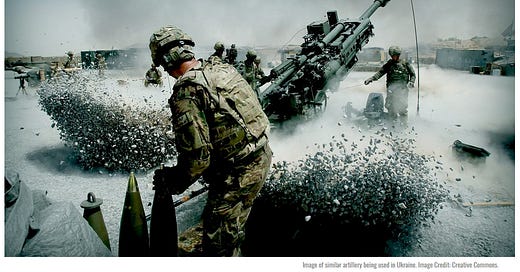



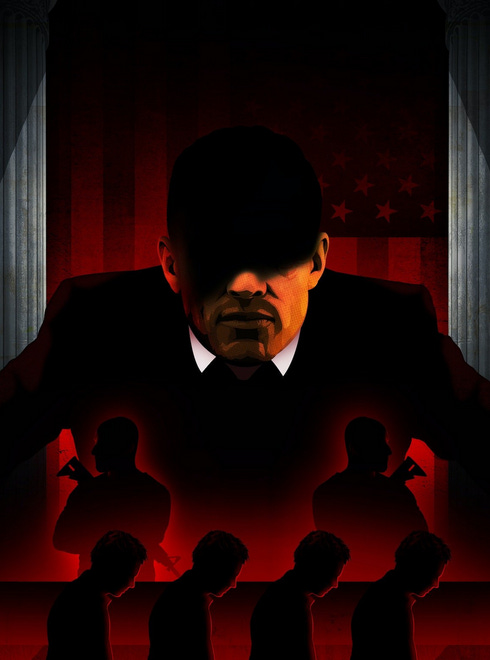

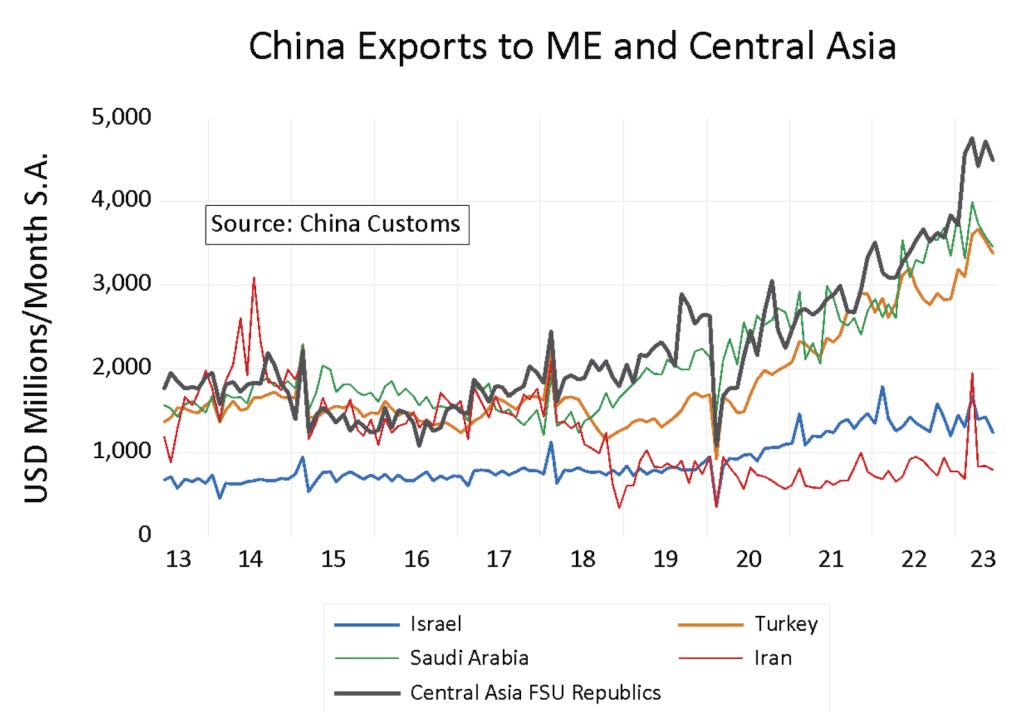
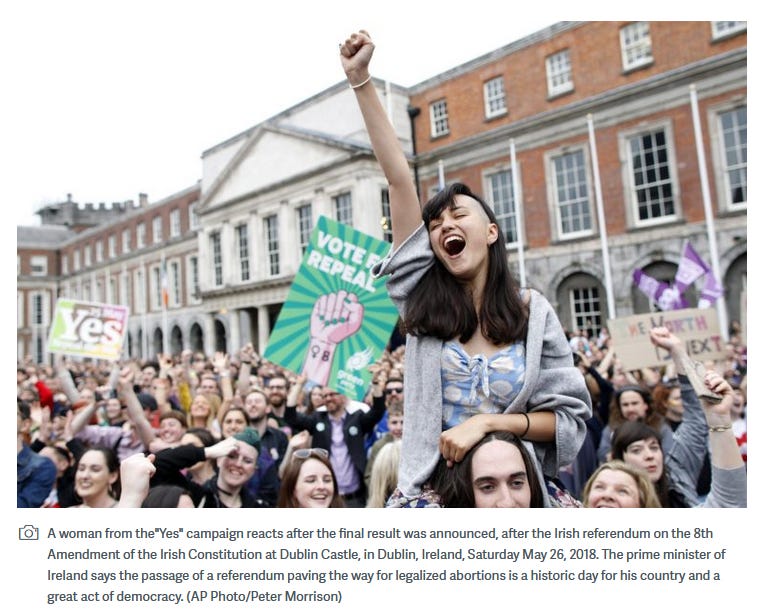


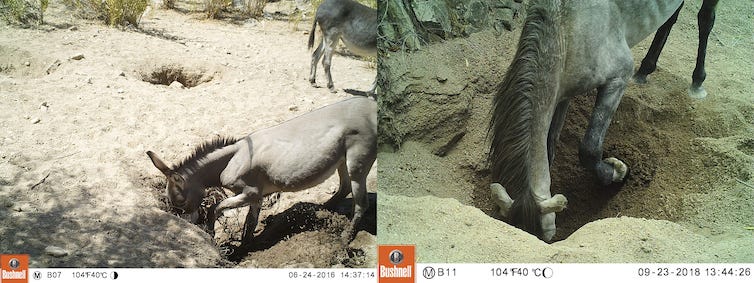

I took two weeks off. I needed it.
Hit the like button at the top of this page to like this entry. Share it using the share and/or re-stack buttons. Leave a comment if the mood strikes you to do so.
I am saddest of all for the Ukrainian troops being fed into the meat grinder. Zelensky cannot be anything less than ultra-hawkish, since he is not trusted by his own senior personnel. As a result his decision making is constrained. Further, his foreign sponsors apparently don't care how many Ukrainians get killed, so long as they are keeping the pressure on Russia, and he must keep them happy. There seems to be no scenario where the Ukrainians can dislodge the Russians from the territory they have already taken, at least not by the means currently available to the Ukrainians.
The recently failed counter-offensive looks like Kursk in 1943, with even German made "animal" tanks (Leopards rather than Tigers or Panthers this time) on the attacking side, and the same futile slog through mines and prepared defenses eating up the attacker's offensive power, with no coherent theory of victory, and no purpose to the attack other than attacking for its own sake.
Next up, waves of outdated (designed in the 1970s), unstealthy F-16s flown by under-trained Ukrainian pilots against a top notch air defense system. The massacre of patriotic Ukrainians will continue in the wild blue yonder.
The entire thing is tragic.